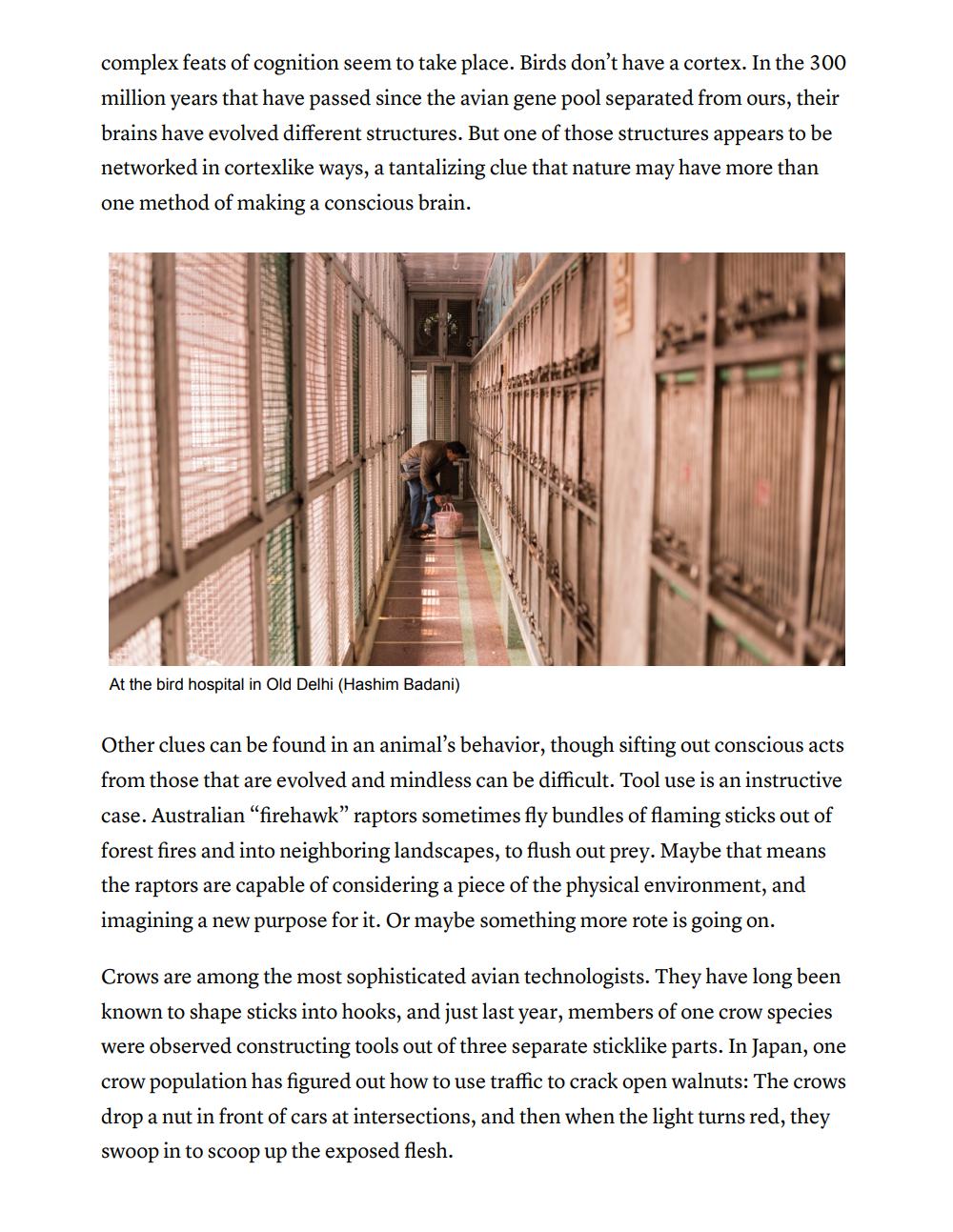Book Title: Journey Into The Animal Mind Author(s): Ross Andersen Publisher: Ross Andersen View full book textPage 9
________________ complex feats of cognition seem to take place. Birds don't have a cortex. In the 300 million years that have passed since the avian gene pool separated from ours, their brains have evolved different structures. But one of those structures appears to be networked in cortexlike ways, a tantalizing clue that nature may have more than one method of making a conscious brain. At the bird hospital in Old Delhi (Hashim Badani) Other clues can be found in an animal's behavior, though sifting out conscious acts from those that are evolved and mindless can be difficult. Tool use is an instructive case. Australian “firehawk” raptors sometimes fly bundles of flaming sticks out of forest fires and into neighboring landscapes, to flush out prey. Maybe that means the raptors are capable of considering a piece of the physical environment, and imagining a new purpose for it. Or maybe something more rote is going on. Crows are among the most sophisticated avian technologists. They have long been known to shape sticks into hooks, and just last year, members of one crow species were observed constructing tools out of three separate sticklike parts. In Japan, one crow population has figured out how to use traffic to crack open walnuts: The crows drop a nut in front of cars at intersections, and then when the light turns red, they swoop in to scoop up the exposed flesh.Page Navigation
1 ... 7 8 9 10 11 12 13 14 15 16 17 18 19 20 21 22 23 24
